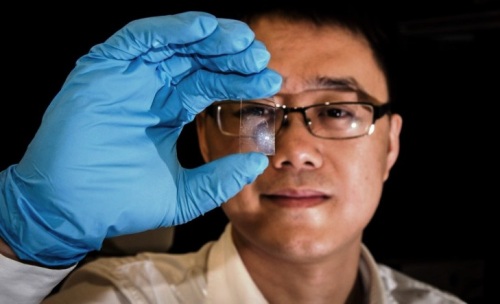A researcher at Nanyang Technological University (Singapore) has created a new graphene-based image sensor that is highly sensitive to not only visible light, but infrared light too. This means it could be used for everything from standard family photos at the park to recording video via satellite cameras, and all without the aid of any additional lighting components.

This new graphene sensor could eliminate a camera’s need for additional lighting.
The sensor is 1,000 times more sensitive to light than a majority of today’s imaging sensors. This is due largely to the graphene — you see, the material’s nanostructure is like a honeycomb, and so it’s able to hold onto light-generated electron particles longer than conventional sensors. This, in turn, results in a stronger-than-normal electrical signal, which can be processed into an image just like the photographs captured by a digital camera.
The inventor of this new sensor, Wang Qijie, an assistant professor at Nanyang’s School of Electrical and Electronic Engineering, said that this marks the first time a broad-spectrum, highly photosensitive sensor has been created using pure graphene.

Inventor Wang Qijie holds his graphene-based imaging sensor.
“We have shown that it is now possible to create cheap, sensitive, and flexible sensors from graphene alone,” said Wang. “We expect our innovation will have great impact not only on the consumer imaging industry, but also in satellite imaging and communication industries, as well as the mid-infrared applications.”
Worth noting is that during development, Wang took current manufacturing processes into consideration, making sure that it would not be too expensive to mass produce this new camera component. As a result, he said that camera makers should be able to keep the same process they use nowadays to manufacture sensors, with the only difference being they would need to switch out the base materials with graphene instead.
Wang also believes that should the industry take to the graphene sensor, it’ll lead to cheaper, lighter cameras with longer battery lives.
Story via: ntu.edu.sg
Advertisement
Learn more about Electronic Products Magazine





